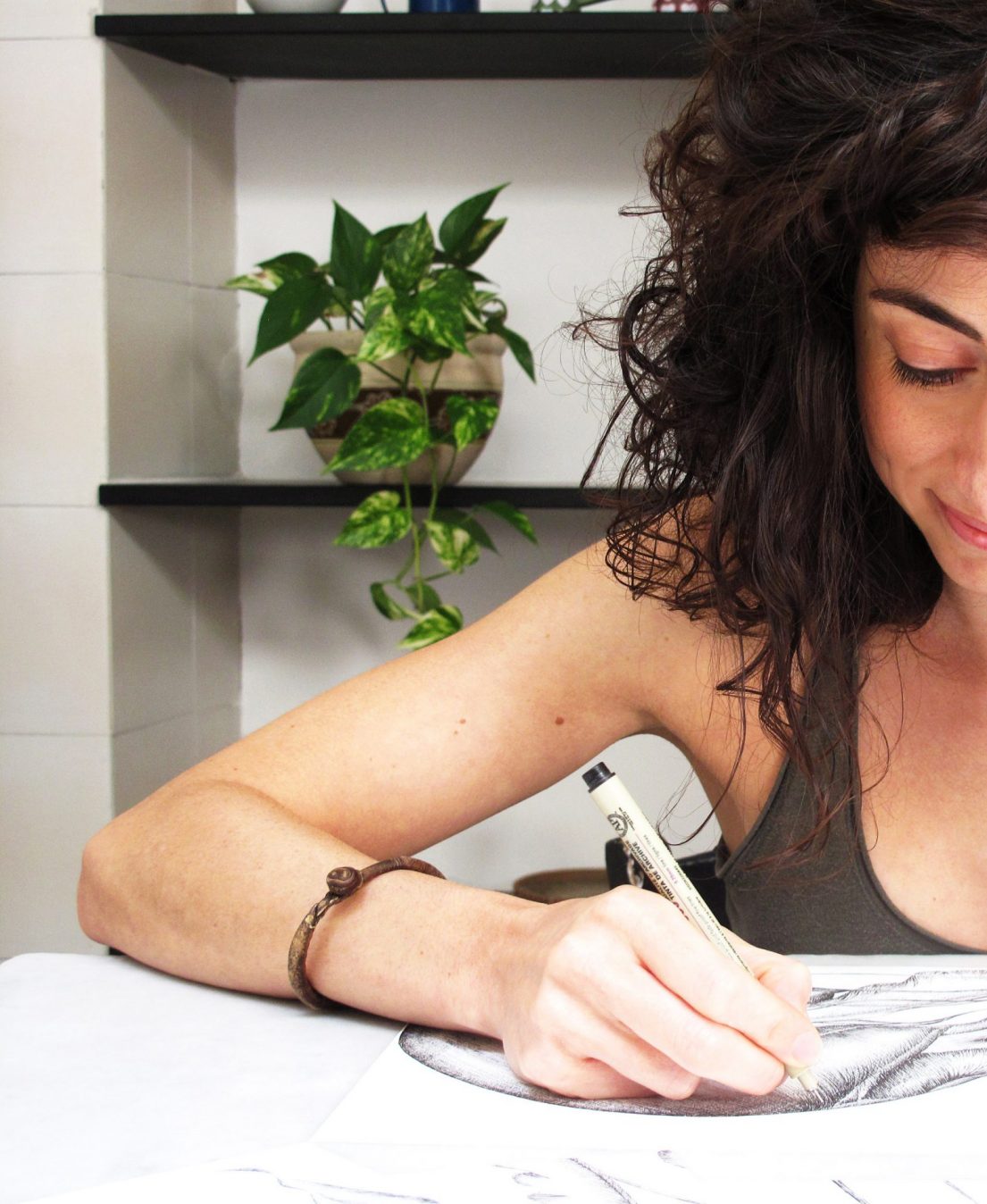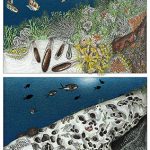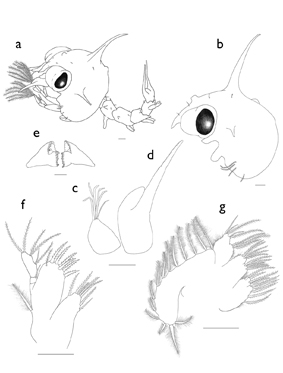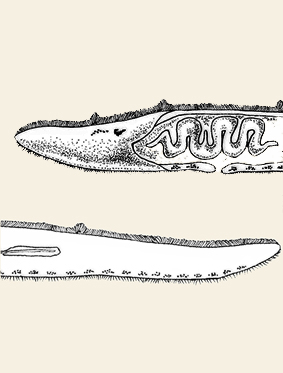About myself
I have always been fascinated by nature. For such reason, in my family I was always playfully defined as “bucolic”, and more often as “wild”. But mine was not just love of nature. I was curious, I wanted to know everything. In fact, I was encouraged to science since childhood.
My education
After high school, I instinctively chose to study Biology at the Polytechnic University of Marche (Ancona, Italy), and there I got a master degree in Marine Biology. Being convinced that my path was research, I got a PhD at the University of Turin (Italy).
PhD studies
The subject of my doctoral studies was a bunch of amazingly weird organisms: the planktonic larvae of crustacean decapods. Extremely tiny and hard to be recognized, with long and complex development, some of them were morphologically unidentifiable because they had never been described before. The description of such larvae requires accurate drawing of all their different features and morphological changes during their development, a very challenging job. During my PhD, I could describe the larval development of two species, a shrimp and a crab.
Drawing for science
That was the first time I drew for a scientific journal. I have always drawn. That is something that I have always loved and always needed. Indeed, I can hardly explain how I felt the very moment I started the first sketch for my research. How extraordinary and at the same time simple it was, and how right to me. That was the turning point in my experience. It changed the way I looked at my drawing, whereas I had always been a shy artist, drawing for myself out of a kind of necessity. And suddenly all that appeared to me as a lifelong training for something amazing: drawing for my research.
Then things happened at a brisk pace. Many colleagues and friends asked me to draw animals, habitats, logos, sketches for scientific papers, books, conventions, lessons, posters. It all became something more than a part-time job. In 2018 I attended the Italian Zoological Union (UZI) annual convention. I drew a poster on the importance of Taxonomy and prepared a short talk on Scientific Illustration. That made me won the Young Researcher Award. The feedback I received from researchers was unbelievable to me. My dream actually started there and then.
My scientific publications
Di Muzio G., Mussat Sartor R., Nurra N., Battuello M., Pessani D., Cervella P., Cuesta J.A. (2019). Morphology of planktonic zoeal stages of Palicus caronii (Decapoda, Brachyura), identified by DNA barcoding, provides novelties to Palicoidea larval systematics. Scientific Reports, 9(1) 1-10. https://doi.org/10.1038/s41598-019-55412-3
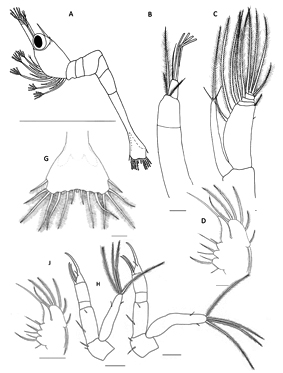
Di Muzio G., Basile R., & Pessani D. (2018). Description of the zoeal stages of Periclimenes aegylios Grippa & d’Udekem d’Acoz, 1996 (Crustacea: Decapoda: Palaemonidae) reared in the laboratory. Zootaxa, 4418(3), 228-246. http://dx.doi.org/10.11646/zootaxa.4418.3.2
Proceedings and technical reports
- Bernardi M., Battuello M., Di Muzio G., Mussat Sartor R., Nurra N., Pessani D., Cervella P. (2019). Nuove evidenze applicative del DNA barcoding per gli stadi larvali dei crostacei decapodi. Biologia Marina Mediterranea, 26 (1) – in press
- Pessani D., Di Muzio G., Delsoglio B. (2017). Clibanarius erythropus (Crustacea Decapoda) glaucothöe: the timing of entering in the first shell and the habitat change. Biologia Marina Mediterranea, 24(1), 228-229
- Di Muzio G., Belmonte G., & Pessani D. (2016). Biodiversity and distribution of crustacean decapod larvae in South Adriatic and Otranto Channel. Biologia Marina Mediterranea, 23(1), 283
- Pantò G., Battuello M., Di Muzio G., Mussat Sartor R., Nurra N. (2016). Seasonal distribution and sex ratio of three copepod families (Pontellidae, Candaciidae, Corycaeidae) in the shallow waters. Biologia Marina Mediterranea, 23(1), 285
- Battuello M., Di Muzio G., Mussat Sartor R., Nurra N., Brizio P., Abete M.C., Squadrone S. (2016). Chaetognats as trace element bioindicators in a marine coastal environment. Biologia Marina Mediterranea, 23(1), 102
- Bastianini M., Bortoluzzi G., Braga F., Dalpasso E., Riminucci F., Bernardi-Aubr F., Finotto S., Lorenzetti G., Luna G.M., Manfrin F., Zaggia L., Bresciani M., Crema A., Decarolis G., L’Astorina A., Ludeno G., Matta E., Musanti M., Oggioni A., Pepe M., Adamo M.P., Pasquariello G., Fornasaro D., Franzo A., Coluccelli A., Di Muzio G. Report on the oceanographical, bio-geochemical, geophysical and geological activities during Cruise ELC2012 with R/V Urania: Adriatic Sea, 2012-05-03/17. EU LTER network and Projects ENVEUROPE and ASI CLAM-PHYM coordinated by ISMAR CNR”. Rapporti ISMAR (2012) 2, 1–63
Contributions to National and International Workshops and Conventions
- 50th National Congress of the Italian Society of Marine Biology (SIBM), 10th-14th June 2019, Livorno (Italy). Bernardi M., Battuello M., Di Muzio G., Mussat Sartor R., Nurra N., Pessani D., Cervella P. New applied evidences for DNA barcoding concerning larval stages of crustacean decapods. (Contributed talk)
- 79th National Congress of the Italian Zoological Union (UZI), 25th-28th September 2018, Lecce (Italy). Di Muzio G., Battuello M., Mussat Sartor R., Nurra N., Pessani D. The dying art of naming. (Poster). Young Researchers Award winner
- Mid-year meeting of The Crustacean Society (TCS), 19th-22nd June 2017, Barcelona (Spain). Pessani D., Battuello M., Di Muzio G., Mussat Sartor R., Nurra N. Seasonal presence and distribution of crustacean decapod larvae in the Ligurian Sea (Mediterranean Sea). (Poster)
- 52nd European Marine Biology Symposium (EMBS), 25th-29th Semptember 2017, Piran (Slovenia). Di Muzio G., Pessani D., Guglielmo L., Granata A., Zambianchi E., Belmonte G. Circulation of Brachuyra zoeae in the South Adriatic: propagules for a dispersal strategy or supply for open marine food chain? (Contributed talk)
- 48th National Congress of the Italian Society of Marine Biology (SIBM), 7th-9th June 2017, Rome (Italy). Pessani D., Di Muzio G., Delsoglio B. Clibanarius erythropus (Crustacea Decapoda) glaucothöe: the timing of entering in the first shell and the habitat change. (Poster)
- 47th National Congress of the Italian Society of Marine Biology (SIBM), 13th-17th June 2016, Torino (Italy), member of the organization committee. Di Muzio G., Belmonte G., Pessani D. Biodiversity and distribution of crustacean decapod larvae in South Adriatic and Otranto channel. (Poster) / Battuello M., Di Muzio G., Mussat Sartor R., Nurra N., Brizio P., Abete M.C., Squadrone S. Chaetognats as trace element bioindicators in a marine coastal environment. (Poster) / Pantò G., Battuello M., Di Muzio G., Mussat Sartor R., Nurra N. Seasonal distribution and sex ratio of three copepod families (Pontellidae, Candaciidae, Corycaeidae) in the shallow waters. (Poster)
- 6th Study Days Edition “Environment emergency: ecotoxicology as a management tool”, November 11th-13th, 2014, Livorno (Italy). Regoli F., Gorbi S., Di Muzio G., Nardi A., Di Carlo M., Fattorini D., D’Errico G., Giuliani M.E., Benedetti M., Mezzelani M., Lanzoni I., Pittura L., Scuderi A., Macchia S., Pellegrini D. Use of integrated ecotoxicological approach for the environmental risk assessment associated with the dredging of the port of Livorno. (Contributed talk)
